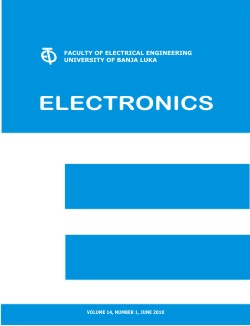Designing Energy Conversion Systems for the Next Decade
DOI:
https://doi.org/10.7251/ELS1216120VAbstract
Sustainable growth in energy consumption requires transition to clean and green energy sources and energy systems. Environment friendly and renewable energy systems deal with electrical energy and rely on efficient electrical power converters. High power electronics is the key technology to deal with the next generation of electrical energy systems. The door to future breakthroughs in high power electronics is opened by major improvement in semiconductor power devices and their packaging technologies. New materials allow for much higher junction temperatures and higher operating voltages. Most importantly, advanced power semiconductor devices and novel converter topology open the possibility to increase the energy efficiency of power conversion and reduce the amount of heat. Although the waste heat created by high power converters can be put to use by adding on to heating systems, this option is not always available and the conversion losses are mostly wasted. At the same time, wasted heat is a form of pollution that threatens the environment. Another task for high power converters is efficient harvesting of renewable energy sources, such as the wind energy and the sun. Intermittent in nature, they pose a difficult task to power converter topology and controls. Eventually, high power converters are entering power distribution and transmission networks. With their quick reaction, with fast communication between the grid nodes and with advanced controllability of high power converters, a number of innovations can be introduced, facilitating the power system control and allowing for optimizations and loss reduction. Coined smart grid, this solution comprises two key elements, and these are intelligent controls and large static power converters. At virtually no cost, smart grids allow for a better utilization of available resources and it enlarges the stable operating range of the transmission systems. Therefore, it is of interest to review the future trends in designing high power converters.Downloads
Published
2012-12-26
Issue
Section
Чланци

